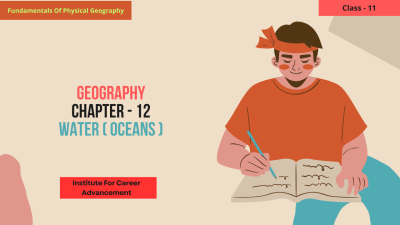Water ( Oceans ) - Class 11
This course explores the vast oceans that cover the majority of Earth's surface. Students will delve into the physical properties of seawater, the ocean currents that shape global climate patterns, and the marine ecosystems that support a diverse array of life. Additionally, the course will discuss the significant role of oceans in human activities, including transportation, trade, and resource extraction. এই কোর্সটি পৃথিবীর পৃষ্ঠের বেশিরভাগ অংশ জুড়ে বিস্তৃত মহাসাগরগুলি অন্বেষণ করে। শিক্ষার্থীরা সমুদ্রের জলের ভৌত বৈশিষ্ট্য, সমুদ্রের স্রোত যা বৈশ্বিক জলবায়ু নিদর্শনকে রূপ দেয় এবং সামুদ্রিক বাস্তুতন্ত্র যা জীবনের বৈচিত্র্যময় বিন্যাসকে সমর্থন করে তা নিয়ে গবেষণা করবে। উপরন্তু, কোর্সটি পরিবহন, বাণিজ্য এবং সম্পদ উত্তোলন সহ মানব ক্রিয়াকলাপে মহাসাগরের উল্লেখযোগ্য ভূমিকা নিয়ে আলোচনা করবে।
English
Last updated
Wed, 27-Nov-2024



















